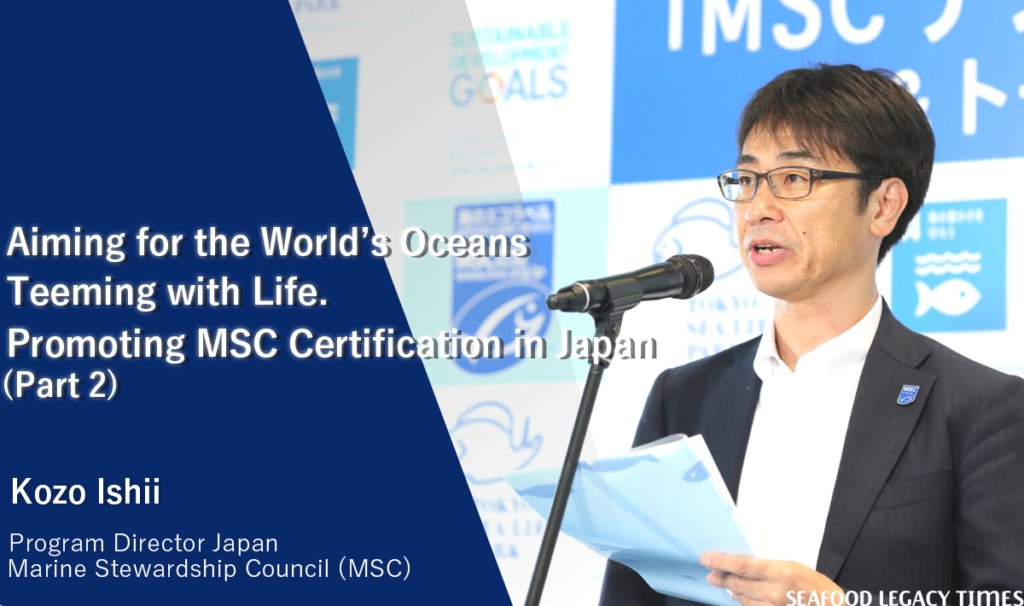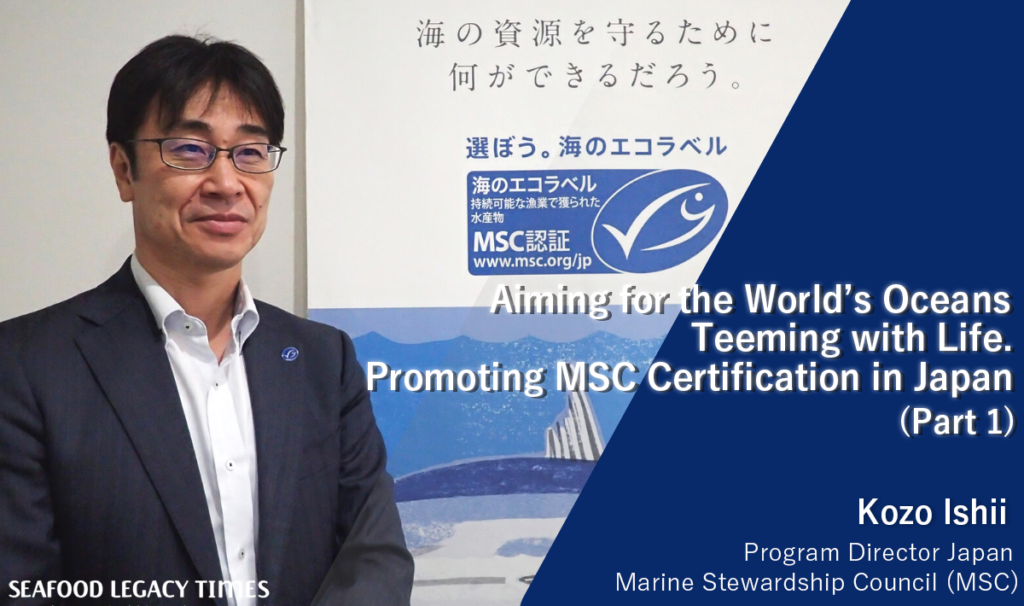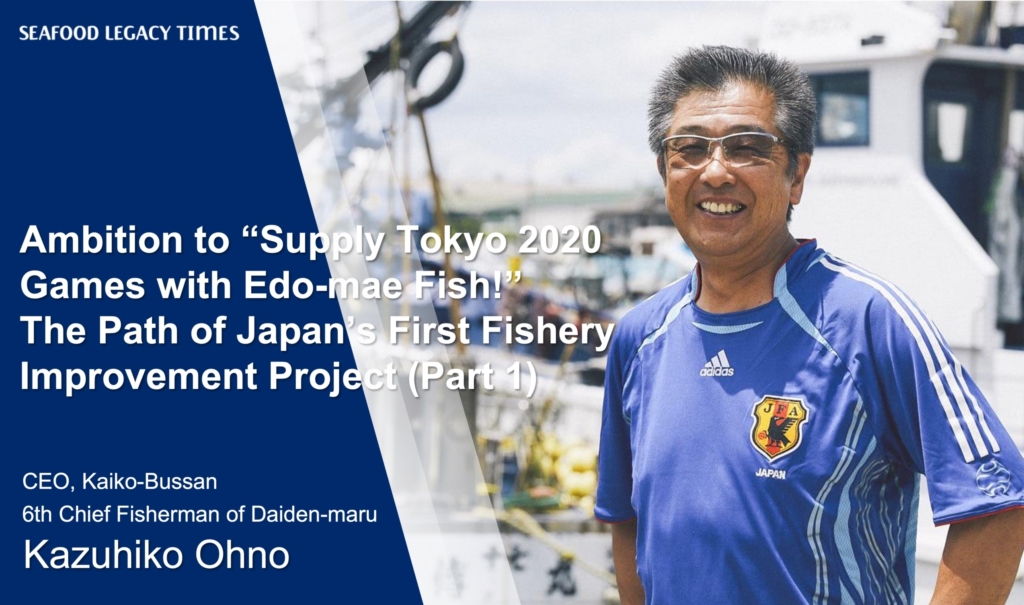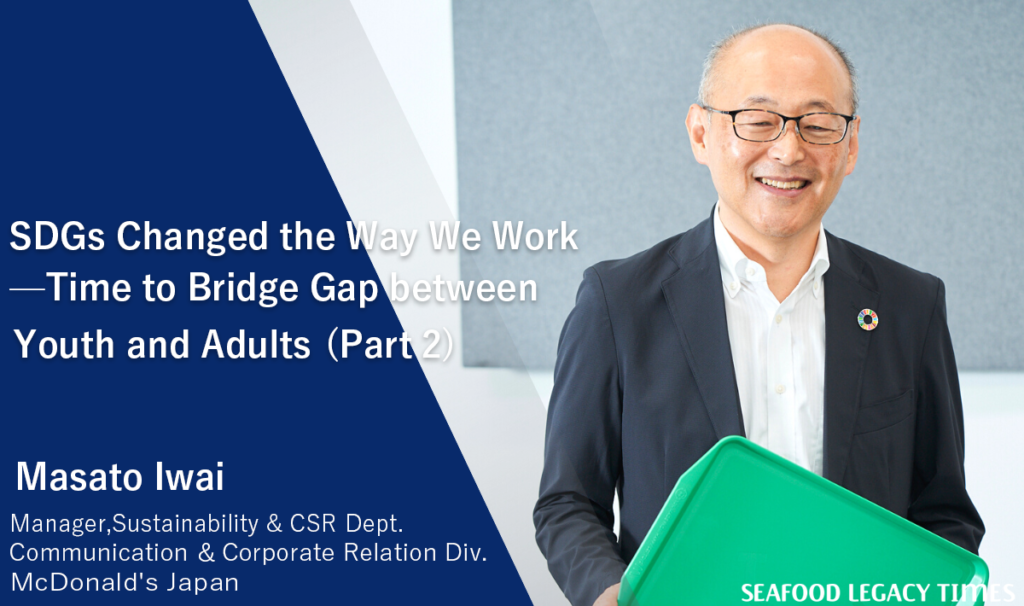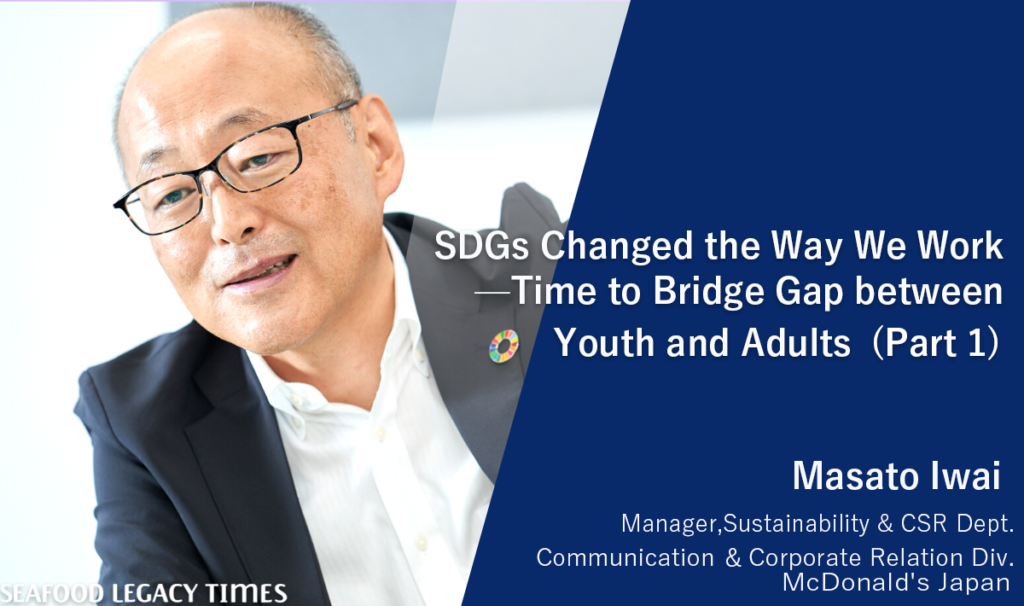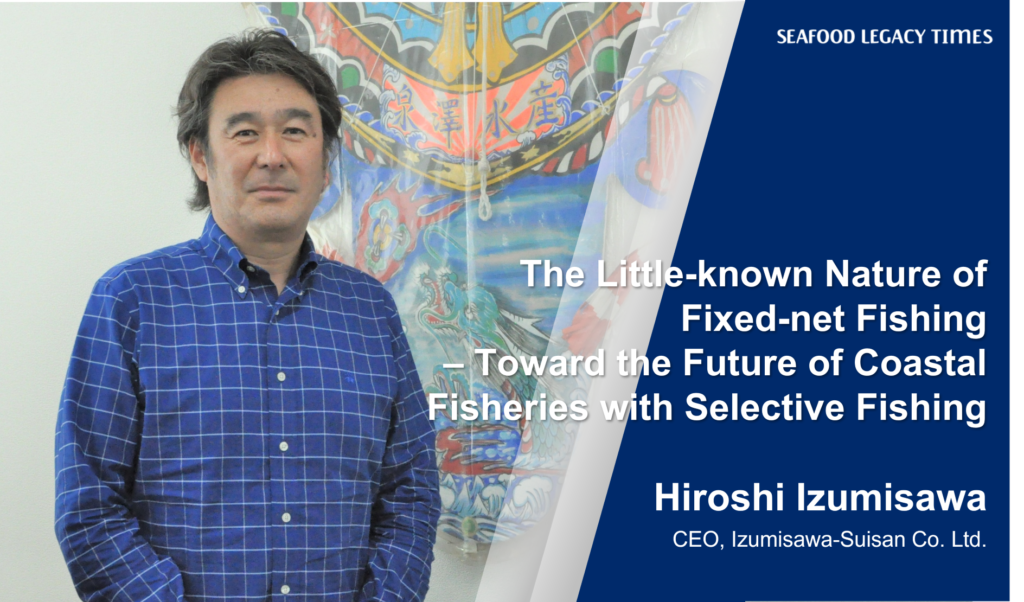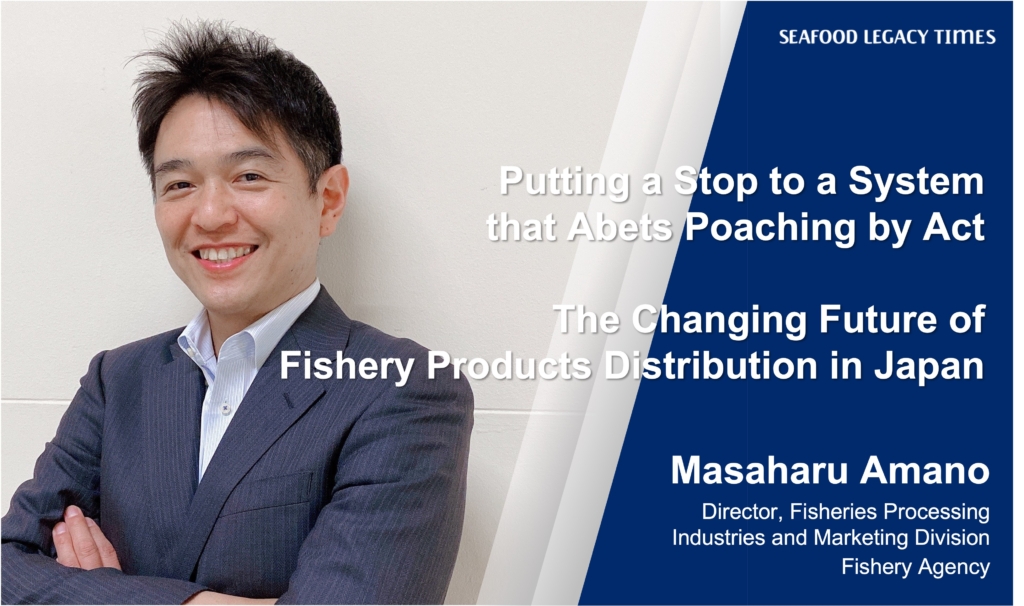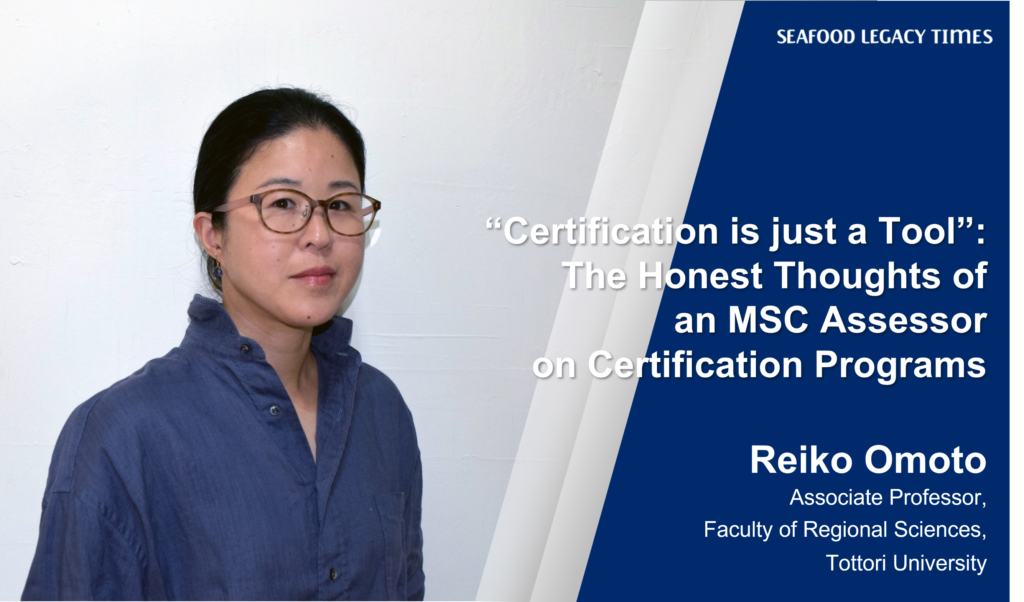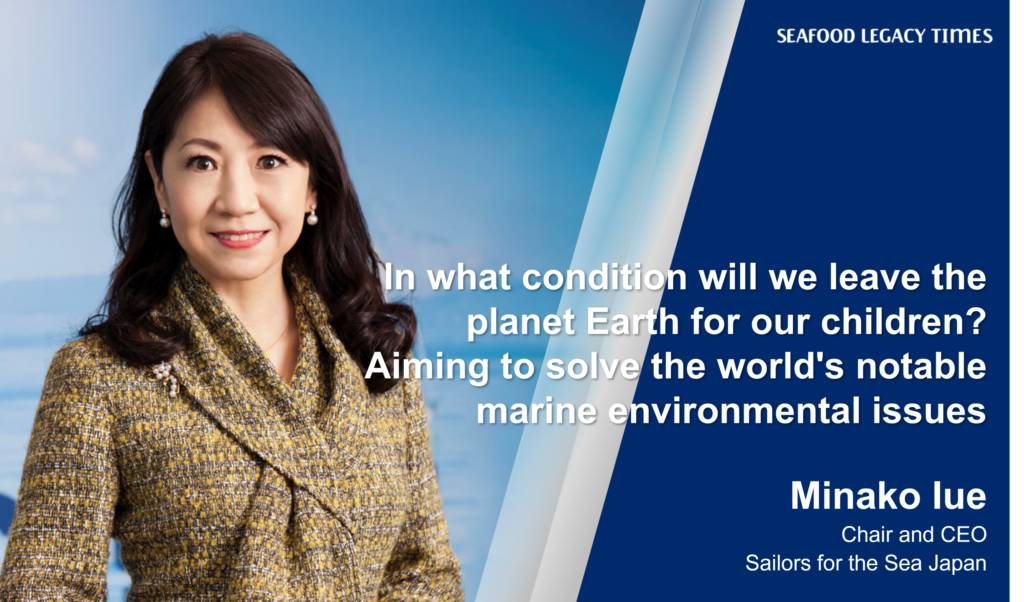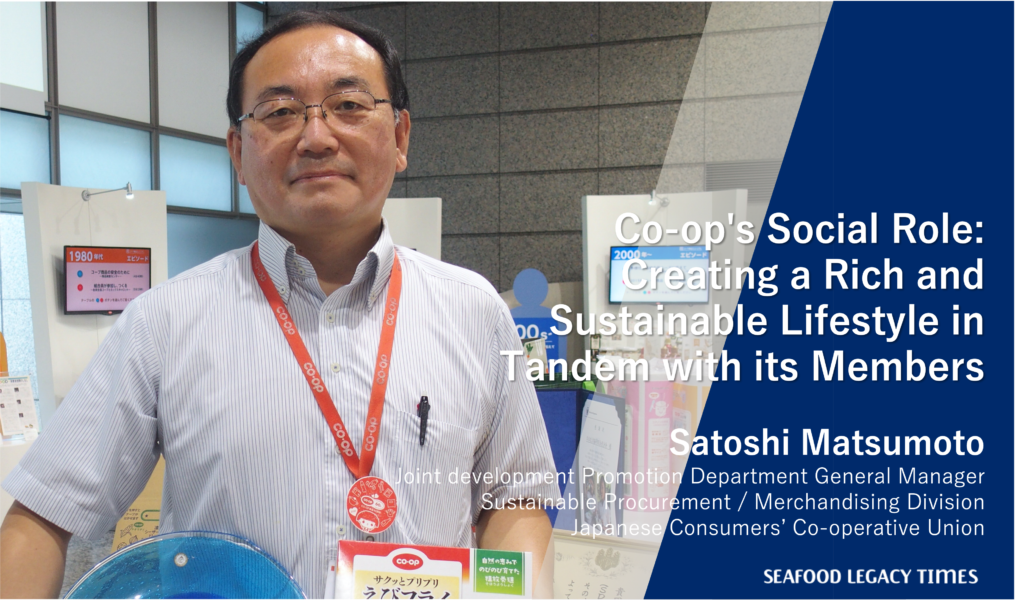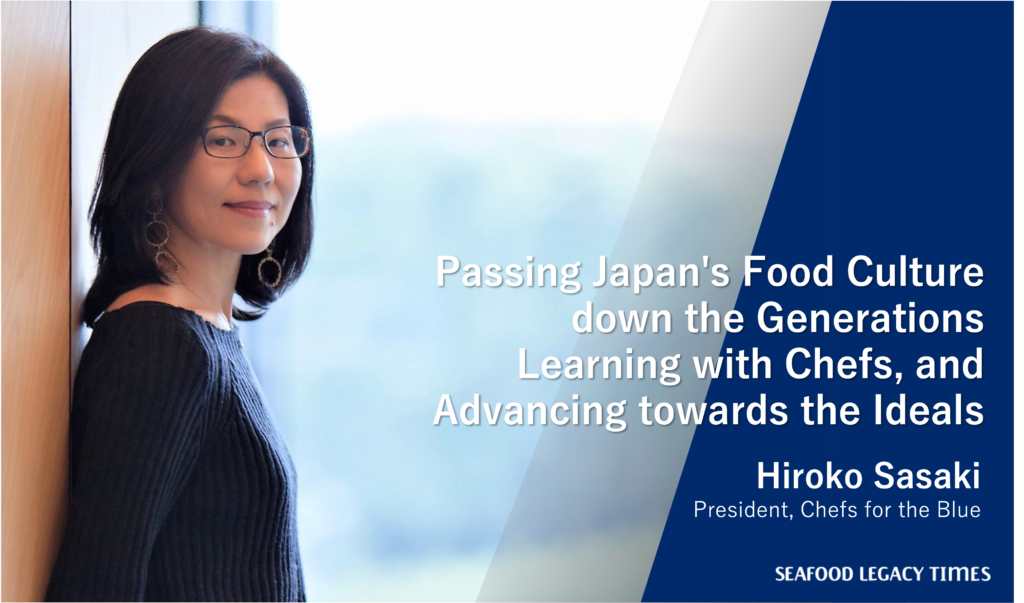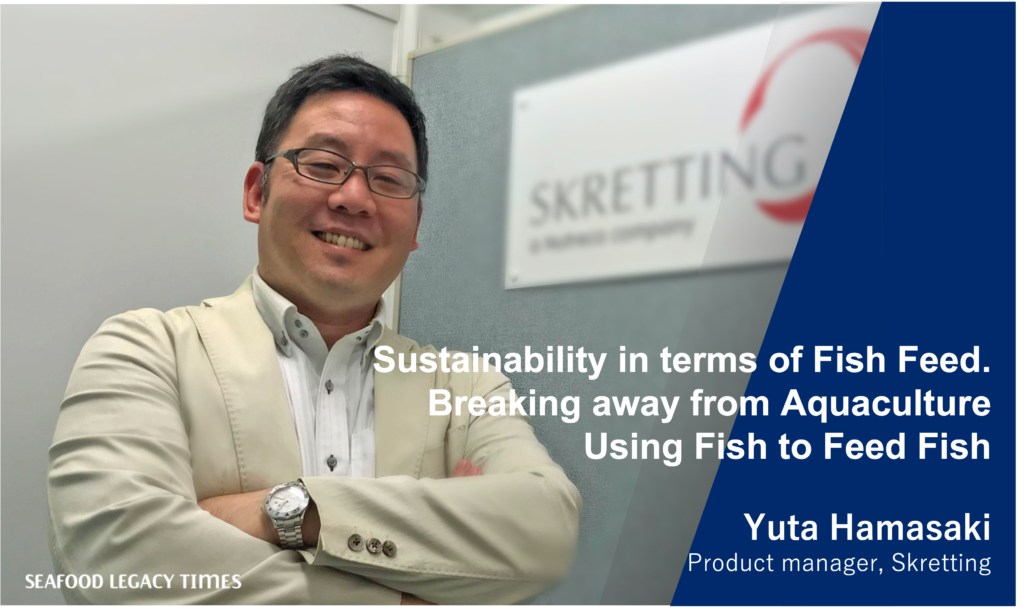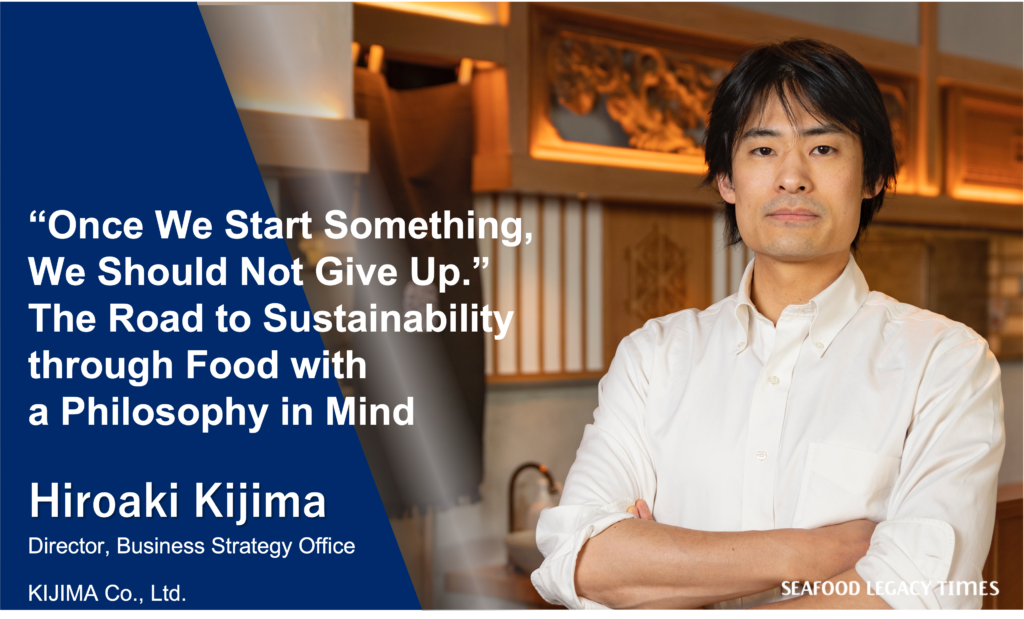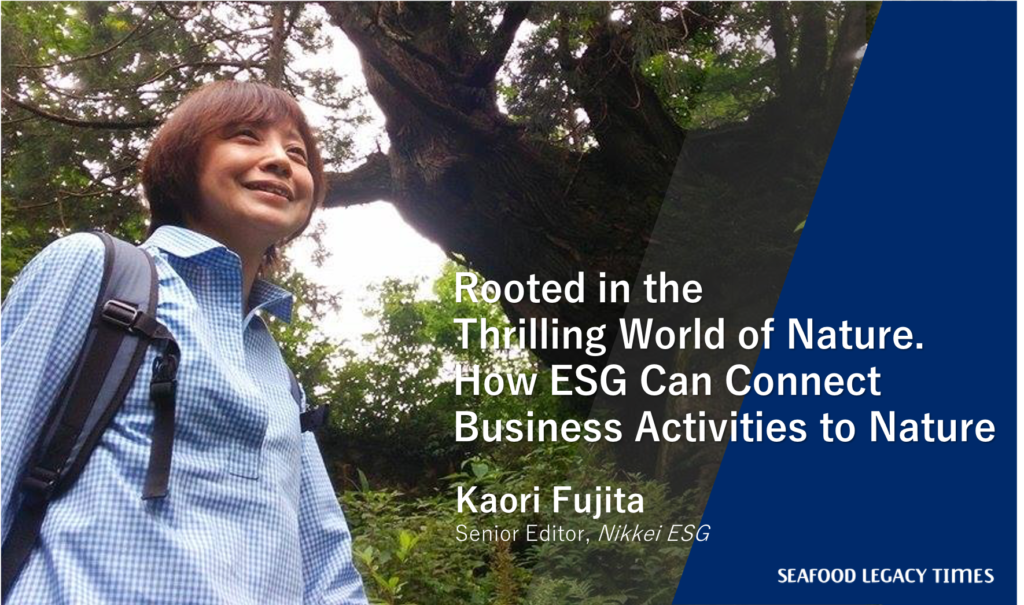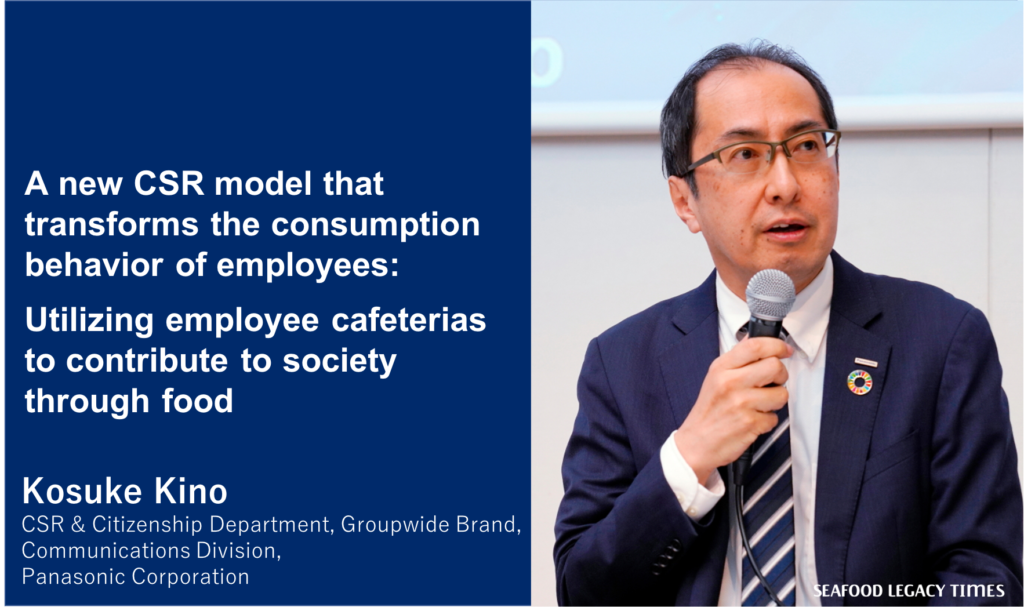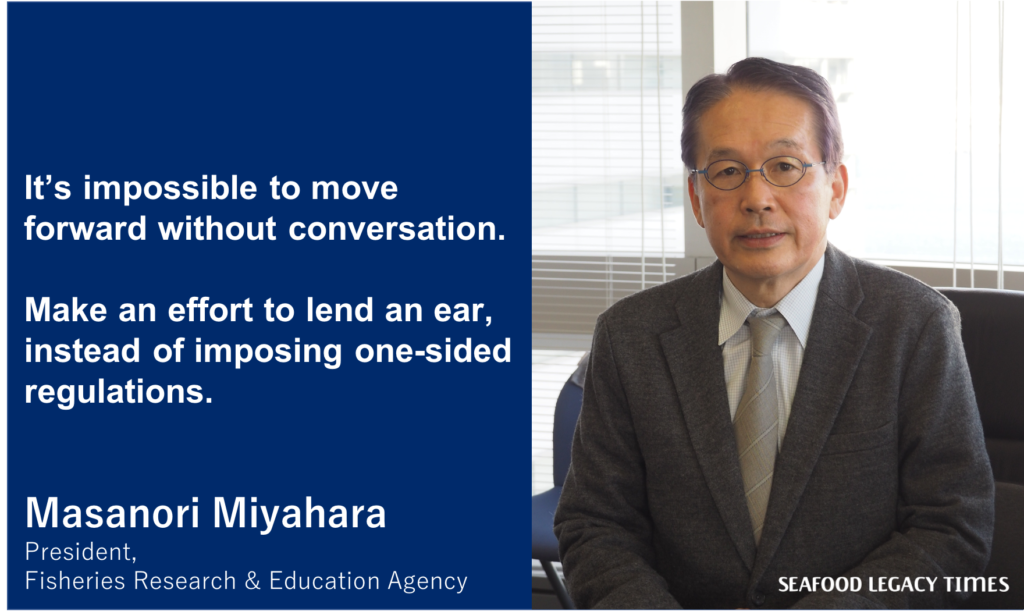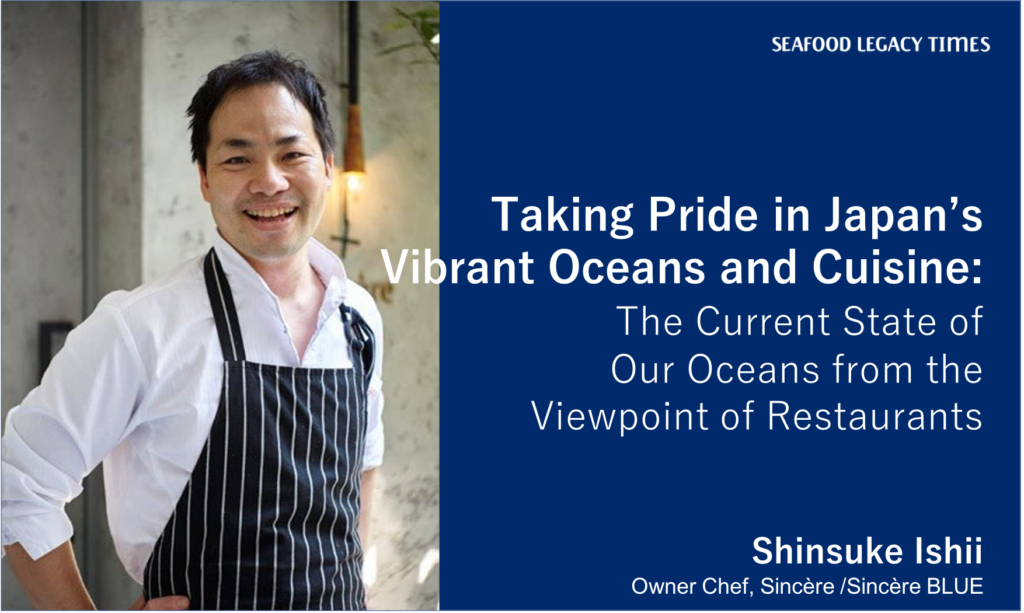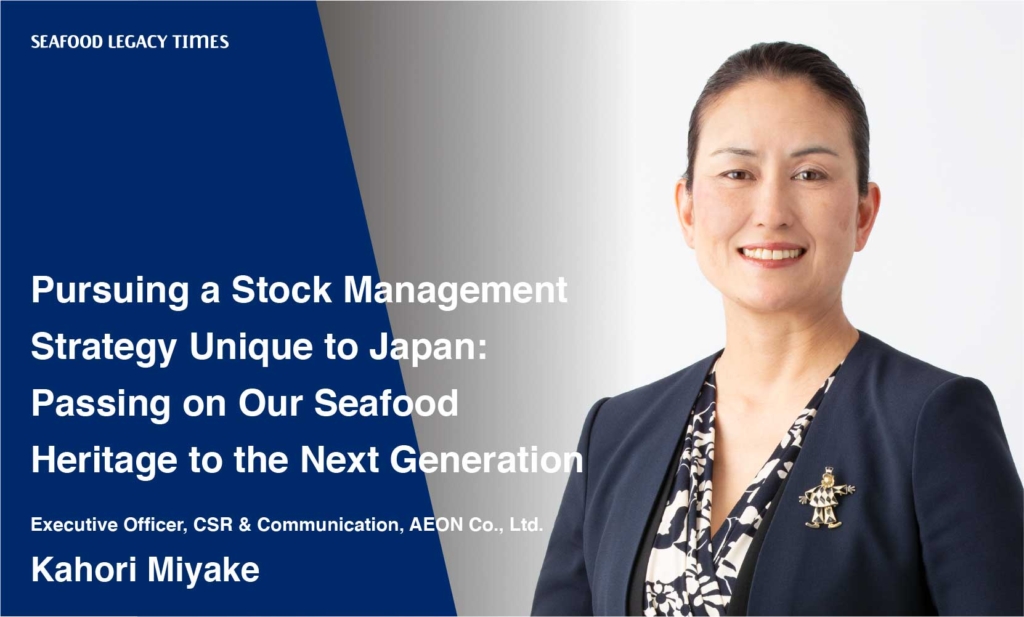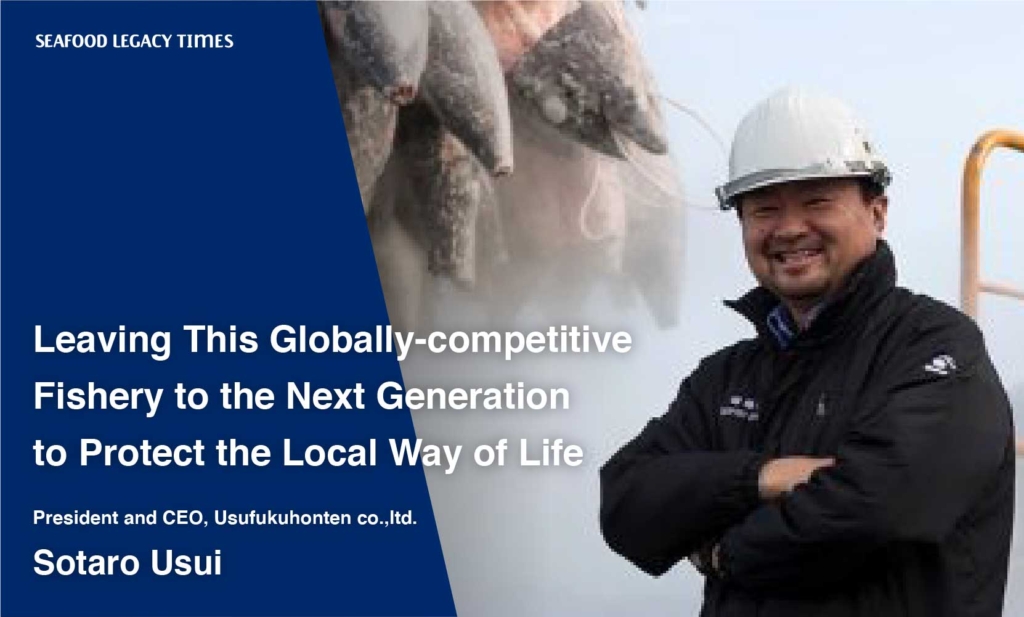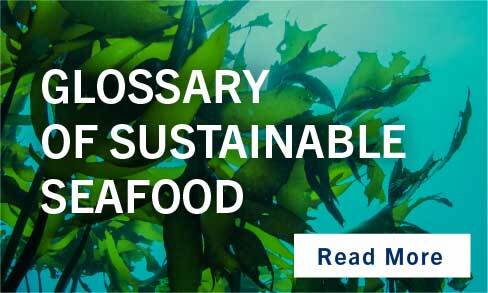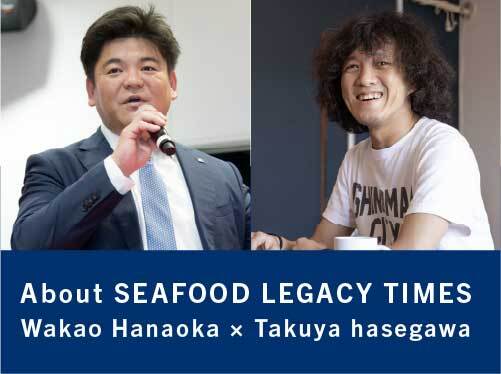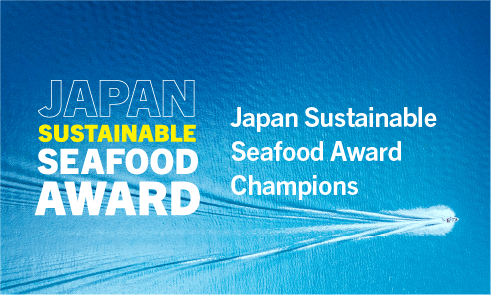
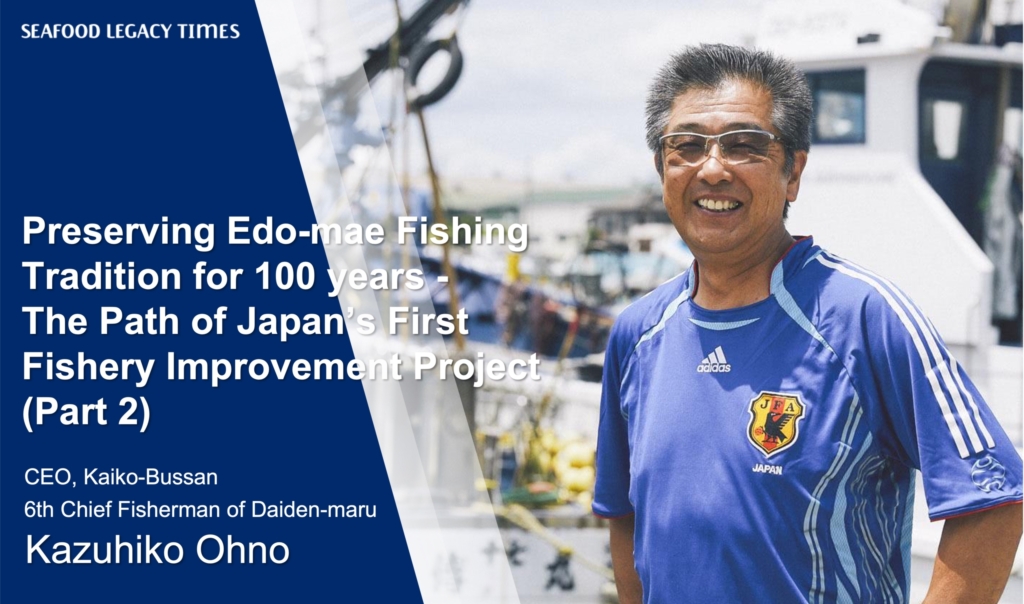
FIPs (Fishery Improvement Project) are collaborative projects that aim to improve fishery practices involving not only producers but also various knowledgeable stakeholders such as municipal governments, researchers,companies, and NGOs, with the ultimate goal of acquiring the Marine Stewardship Council (MSC) certification and elevating the fishery to a sustainable operation.
Daidenmaru Ltd., led by its 6th Chief Fisherman Kazuhiko Ohno, is the first to initiate a FIP in Japan. We asked him about its progress 5 years on, what he thinks about the current situation of Japan’s fishing industry, and his recent contemplations.
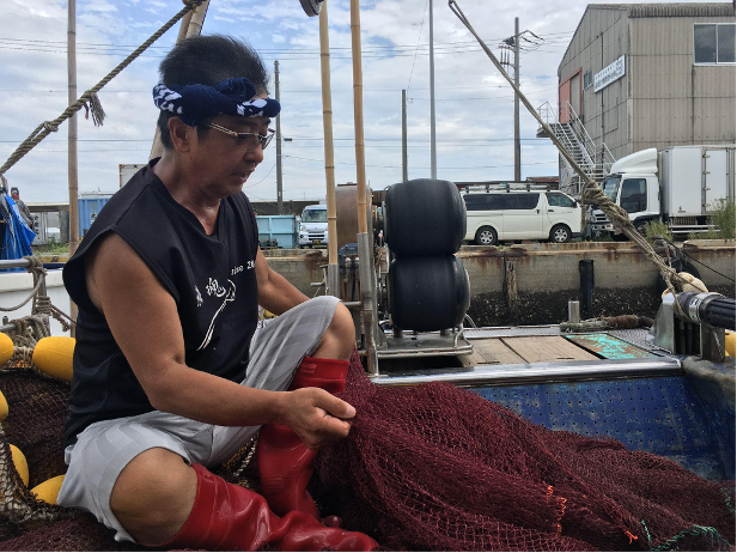
—Please tell us about the recording of catch data for the FIP.
In the 2nd year of the FIP, they started asking me to record catch data. For each net cast, I need to record the exact date, time, latitude, longitude, water depth, wind direction, the range of length and weight of the sea perch caught, and any bycatch such as cutlassfish together with their weight. Sometimes, a single net cast can haul in more than 10 types of fish and I would have to record all of them.
I would record them in memos during our daily fishing operations and enter them into excel worksheets on my rest day that comes once a week. I continued doing this for a whole year and our FIP received a Progress Rating of A, which motivated me but to be honest, it was tough. During peak seasons, we would cast up to 10 times a day. I was looking for a way to reduce the workload of recording that data.
Fortunately, I encountered Mr. Shindo from Lighthouse Inc. (who is the current CEO of the company), which works on the digitalization of the fishing industry. At that time, he had yet to establish the company and was obtaining input from fisheries all over Japan and also came to me, so I shared my predicament. Their flagship product is a system called ISANA, which uses sonar and fishfinders to improve fishing efficiency, but they also helped me develop a system to record catch data. It was roughly completed last year, so I signed a contract with them.
Thanks to their help, I could now use a tablet and stylus pen to record things like “Encountered a sea turtle. Caught in net and returned to the sea”, which I previously had to write by hand in the remarks column of my notebook. I am very excited to see how they will upgrade the system going forward.
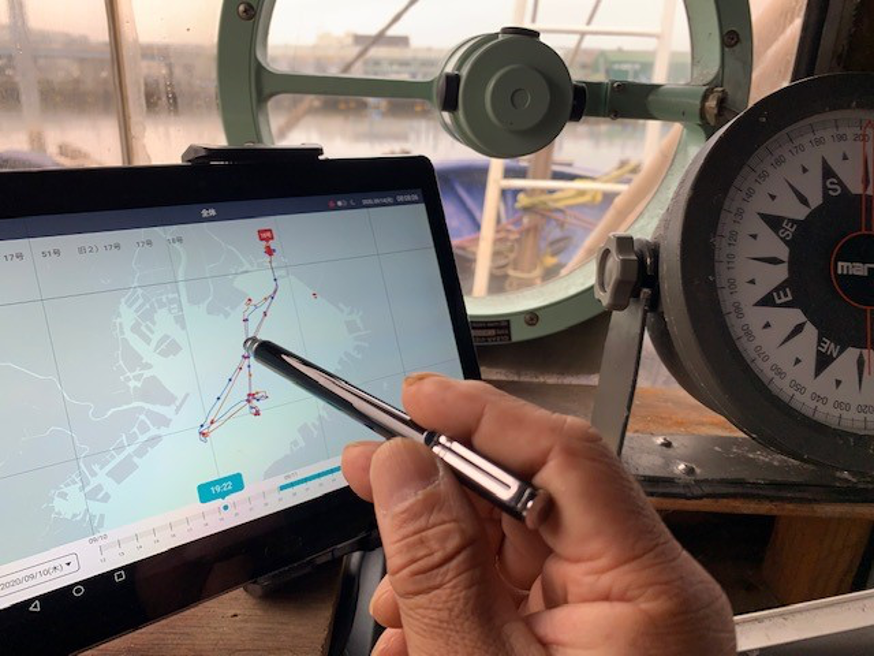
—You are even using blockchain technology to add traceability for more transparent distribution. Are the distributors and consumers becoming more aware about sustainability?
There is still a long way to go.
As a fisherman, you don’t want anyone to know the exact location that you caught your fish. It is common to submit catch data with fake datums on purpose. That is why the fish we catch are all different. Yet I am going through all this trouble to make our catch data transparent.
Managing stock means limiting my income, so I need to make up for that loss with some new value-added service. I want people to understand the value of putting fish catch data on a blockchain that turns it into immutable data and allows for decentralized management.
Instead of unknowingly buying a fish that was sold on the black market, making you complicit in the crime, consumers can now support fisheries that are implementing FIP through the simple act of “buying fish”. How great would it be if that can be done in Japan?
Thankfully, young people are becoming more conscious and are slowly but surely recognizing the benefits of the MSC certification. It made me realize how important education truly is. Other than serving fish at school lunches as part of dietary education, I hope they also teach the children in classes about the crisis befalling our seas now and get them to understand that fish stocks may become depleted in the future if we continue the same damaging practices.
—What do you think about the Fisheries Act that was finally revised after 70 years, at the end of 2020?
As a whole, I think it was a good move. However, while the aquaculture industry that demanded that the whole industry come together to reform our practices gained more favorable conditions legally and became much easier to enter thanks to this revision, the wild fisheries that includes like us have failed to make any meaningful progress and I think we would get left behind in the dust if we are not careful. For example, should the overfishing of so-called “juvenile mackerel” that are used to feed farmed fish be considered the responsibility of the aquaculture industry or the fisheries? Where is our pride as ethical fishermen?
I understand the urge to secure a stable supply of fish through aquaculture as the wild fish stock is starting to decline but I think the value of wild-caught fish can’t be determined by the price tag alone and we need to tell their stories through better marketing and branding.
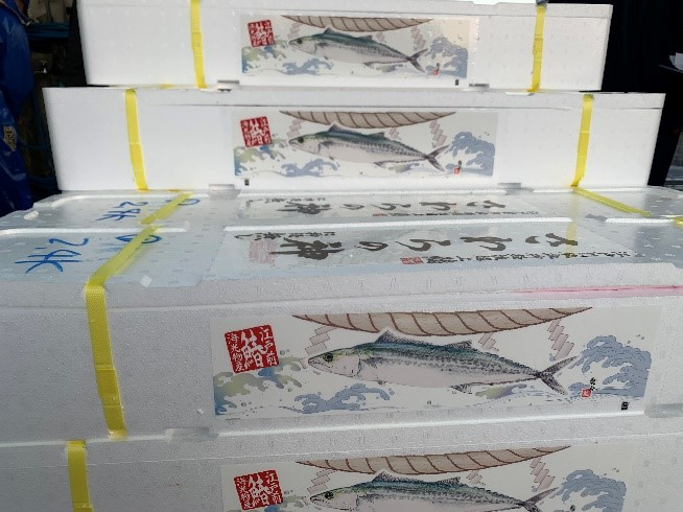
—Japan’s seafood production hit record lows for 2 years in a row. Is there nothing we can do to stop the downward trend of seafood production?
I liken it to trying to buy a branded bag without knowing exactly how much money you have in your wallet. I think we should first find out how many fish are available in specific ocean regions, share basic information on scientific assessment of fishery resources, and create a sustainable fisheries management plan based on that knowledge.
As marine resources are not limitless, I believe we all realize that the number of fish is dwindling. Despite that, most fisheries will feign ignorance and continue the same damaging practices unless they are shown the actual figures. That is how we got to the point where we are getting headlines “Japan’s seafood production hit record lows for 2 years in a row.”
So, the government authorities need to announce the results of the stock assessment and assign proper fishing quota to manage the fishery resources. Especially in the case of Tokyo Bay.
—Has the water quality in the Tokyo Bay improved compared to in the past?
When I was a child, I always wondered, “Is it really safe to eat fish caught here?” In particular, the Golden Beach in Funabashi was extremely dirty. As I grew up in that environment, I consider it a miracle that we are able to catch and even eat the fish from the Tokyo Bay today. Thanks to strict environmental standards and water pollution standards, the water has definitely become much cleaner.
However, like the Seto Inland Sea, the Tokyo Bay is also becoming depleted of nutrients, causing the dwindling of planktons that the fish feed on and this disruption of the food chain has resulted in shrinking fish sizes and flesh density each year. Micro-plastics are also a serious problem.
—What is the significance of fishing in the Tokyo Bay for you?
The fact that we are purse seine fishing in a bay area that is traversed by massive ships and surrounded by skyscrapers as well as industrial zones is nothing short of a miracle. I want to show and inspire coastal fisheries all over Japan that even the Tokyo Bay that has been horribly damaged by urbanization and industrialization can provide bountiful seafood that is passed down for generations.
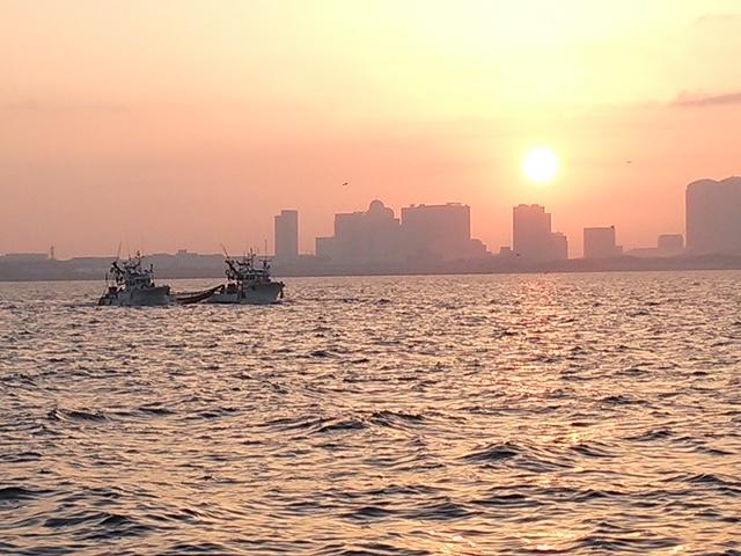 Fishing operation in Tokyo Bay. Sun rising from Makuhari Messe
Fishing operation in Tokyo Bay. Sun rising from Makuhari MesseThroughout the 40 years that I have taken my fishing boat out to sea, I have put the oceans under a lot of stress. I have overfished in the past. We developed various techniques and technologies to catch more and more fish. It is a “tragedy of the commons.”
As a way to atone for those sins, I started the “100 Years Sustainable Fishery Project.” I inherited the business from my grandfather, who was fishing 100 years ago, and am currently in the stage of passing down the business to my own children. I don’t want to pass down something that I can’t be sure if it is worth passing down to the younger generations 100 years in the future.
So, after I retire as a fisherman, I want to be involved in environmental activities such as carbon neutrality and micro-plastics recovery.
Thankfully, we still have the strong “Edo-mae” brand. Edo’s unique culture. While we missed the opportunity to promote it at the Tokyo 2020 Games, I will do my best to establish the “Edo-mae brand” for future generations. I hope we can move past the conventional competitive fishing norms in which the “winner takes all” and “first come, first catch” and advance towards well-managed, collaborative, sustainable, and abundant fishery resources so that we can hand down the Edo-mae fishing tradition to the next generation.
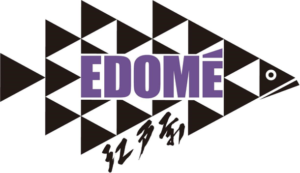
Kazuhiko Ohno
6th Chief Fisherman of Daiden-maru. Kazuhiko Ono Graduated from university and joined Daidenmaru Ltd, which was established by his father in 1982. He established Kaiko Bussan Ltd. in 1989. In 1993, he became the CEO of both companies. In 2014, he named the method of instantaneously draining the blood and removing the nerves from sea perch “Shun-jime” and sold them under the brand “Edomae Funabashi Shun-jime Sea Perch”, which has been designated as one of the “Chiba Prefecture Branded Seafood” and chosen as one of the National Pride Fish (Summer). In 2016, he announced the initiation of the first Fishery Improvement Project (FIP) in Japan. In 2018, Kaiko Bussan Ltd. acquired the Marine Ecolabel Japan (MEL) Ver. 1 and currently applying for Ver. 2 of the same standard.


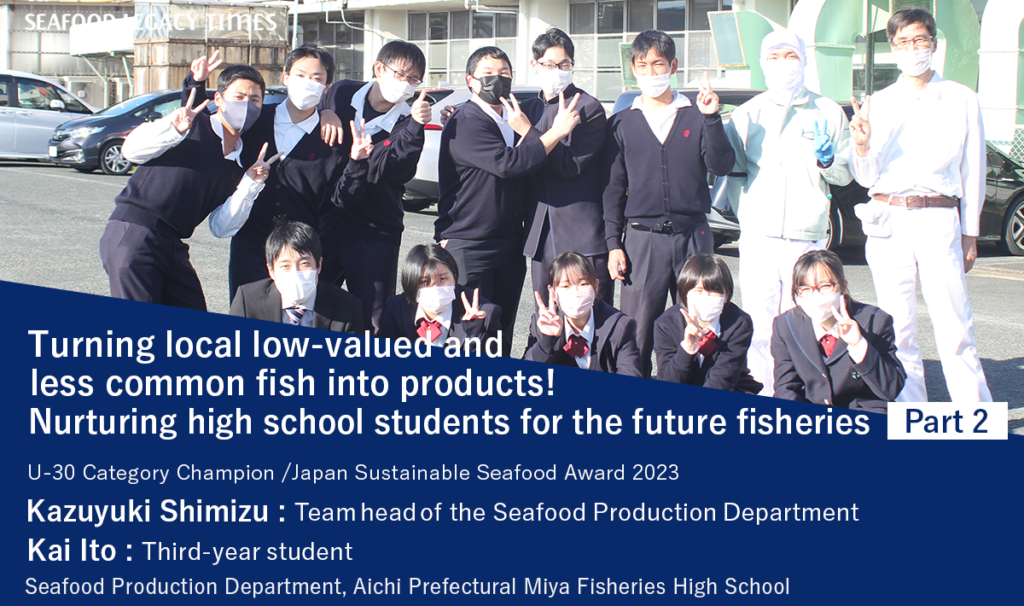
-1024x606.png)


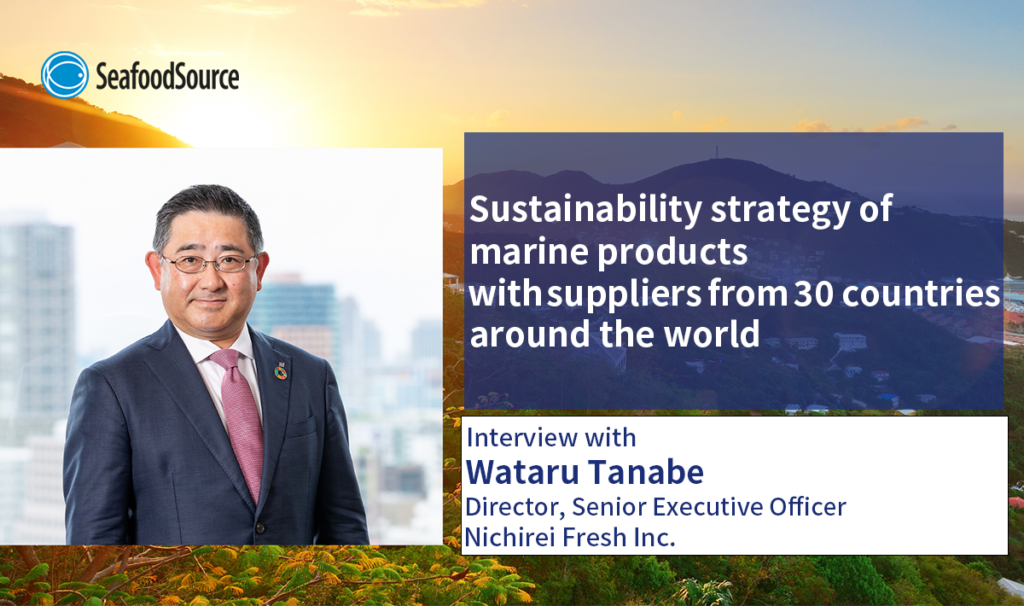
_-1024x606.png)

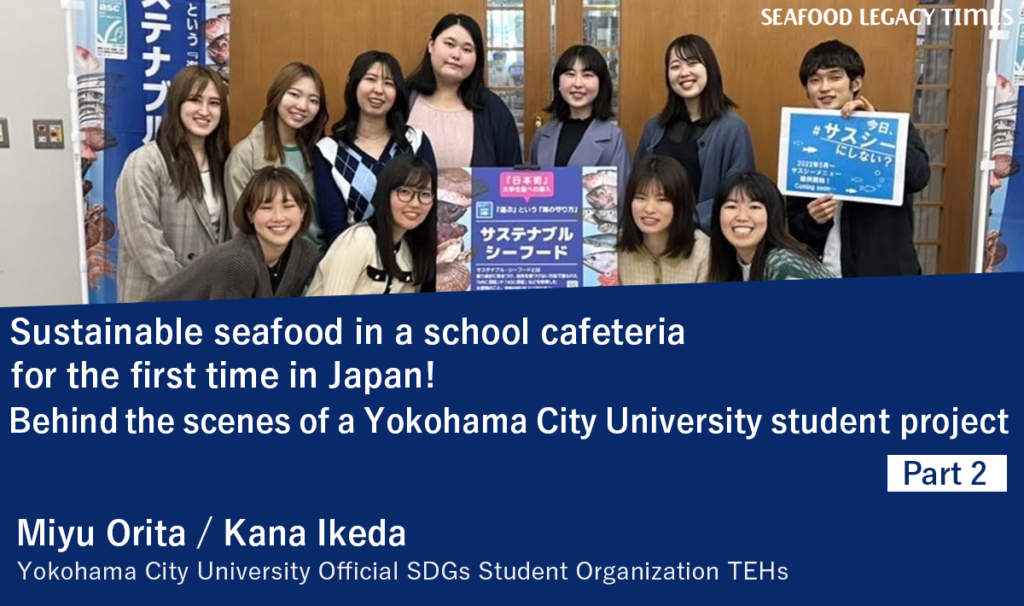
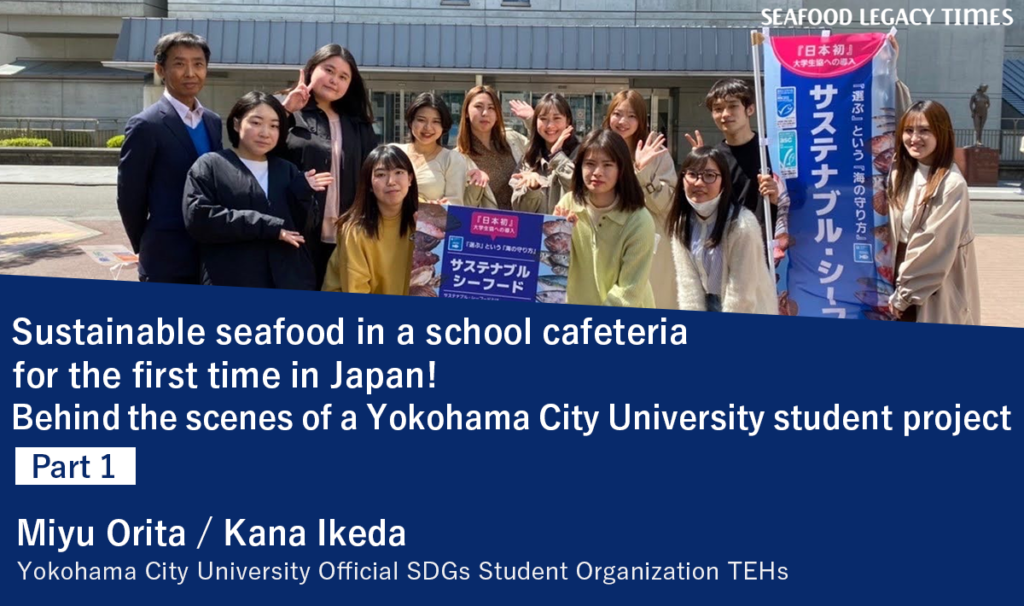
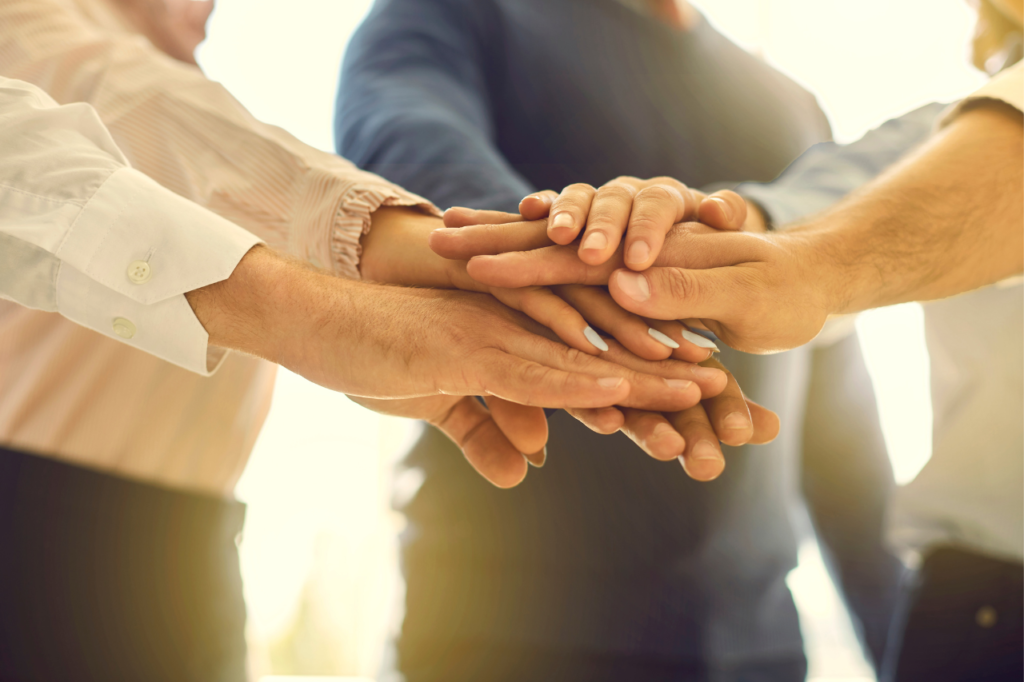


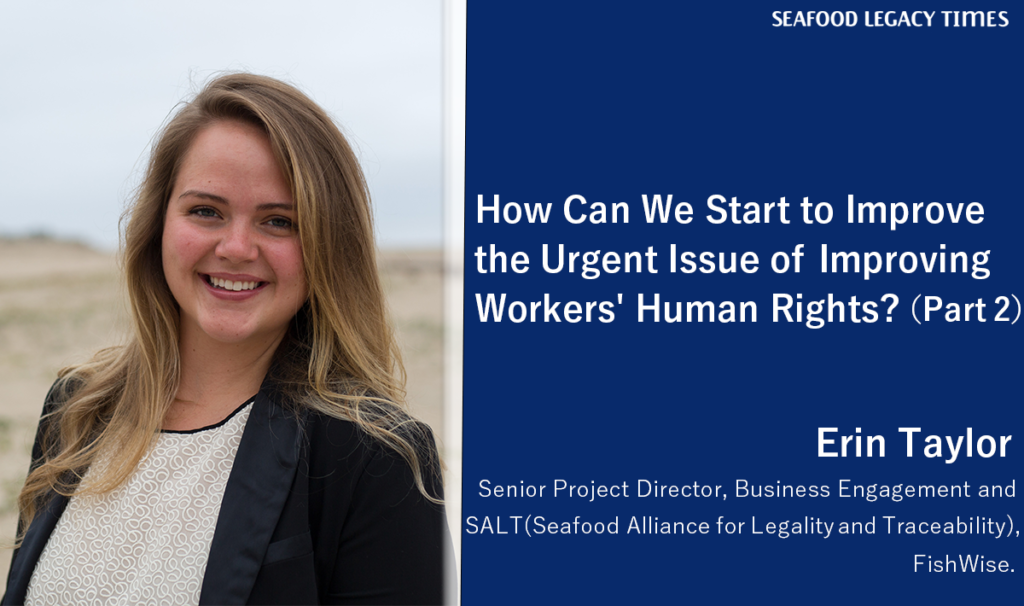
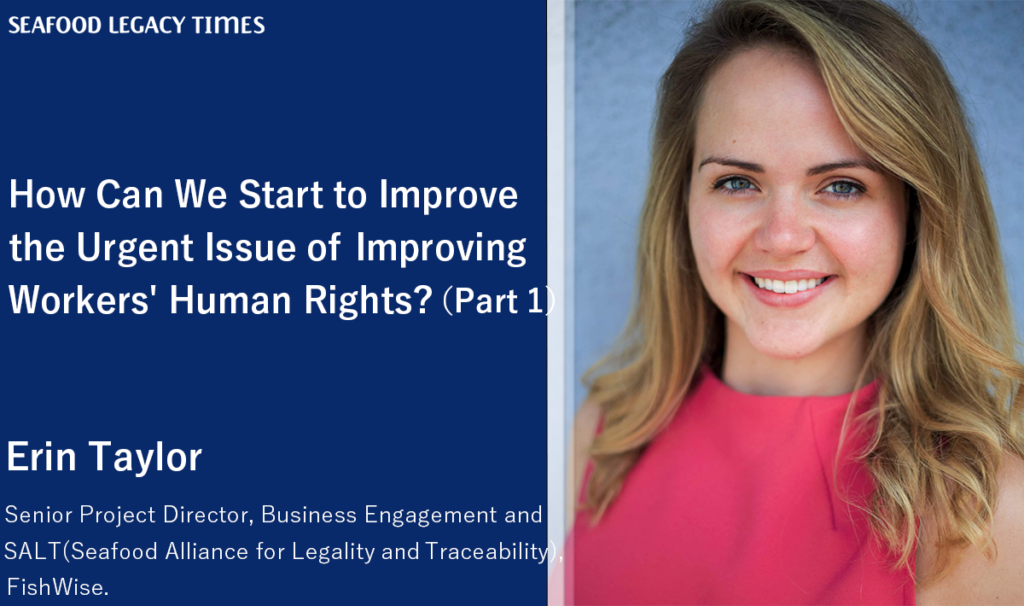
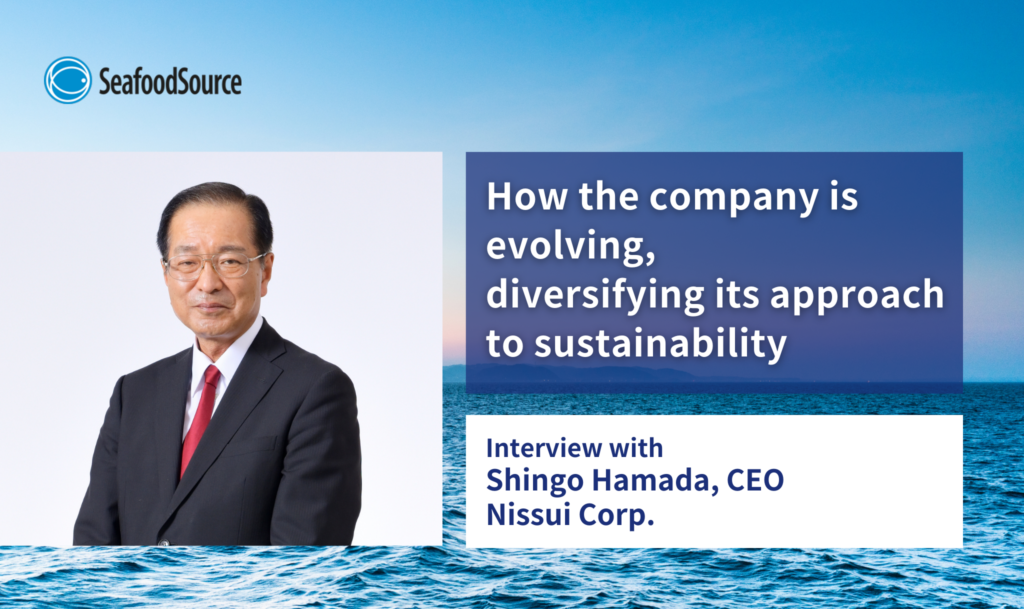




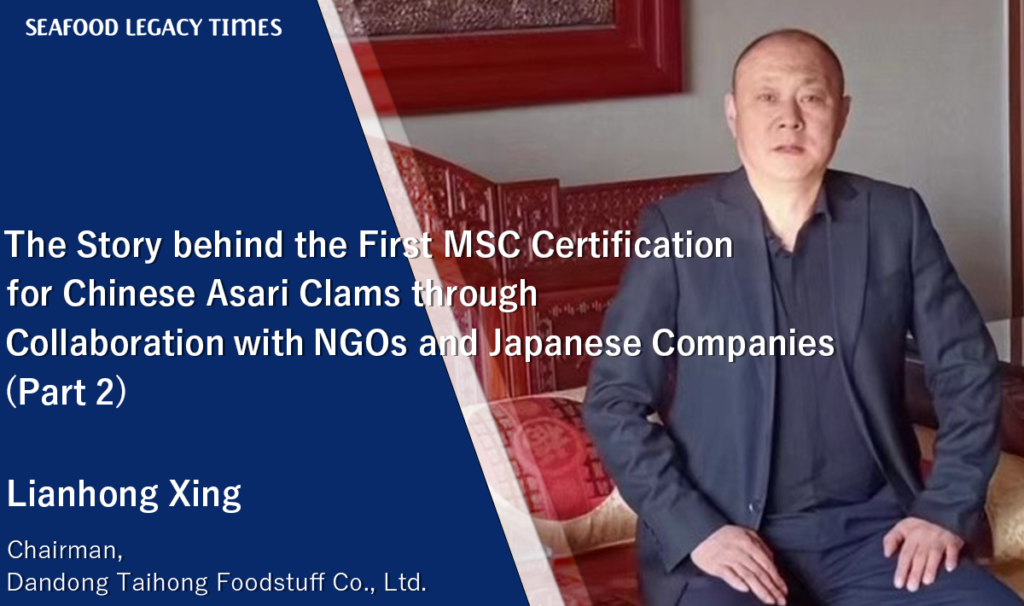
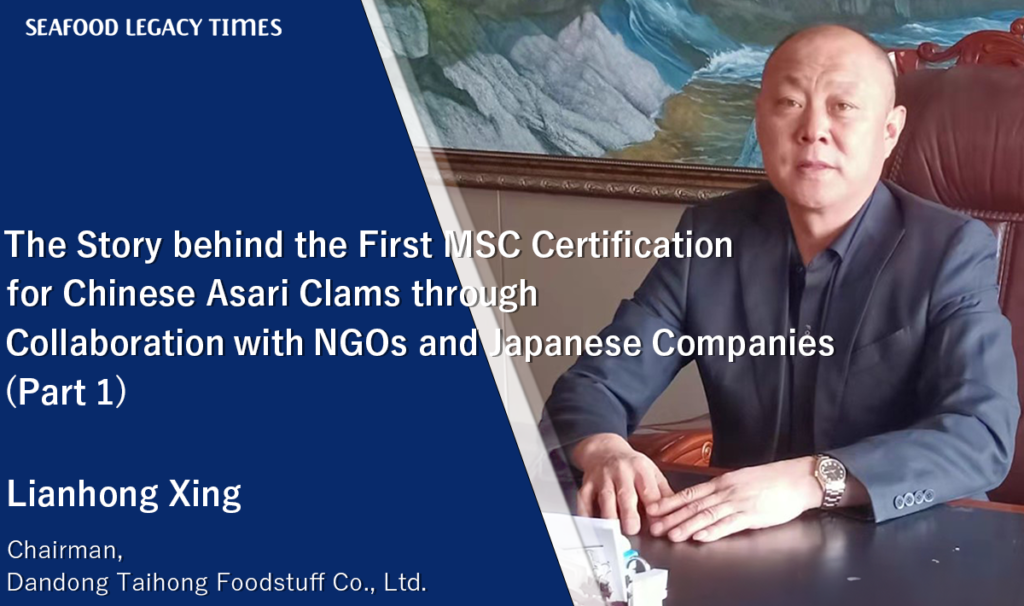

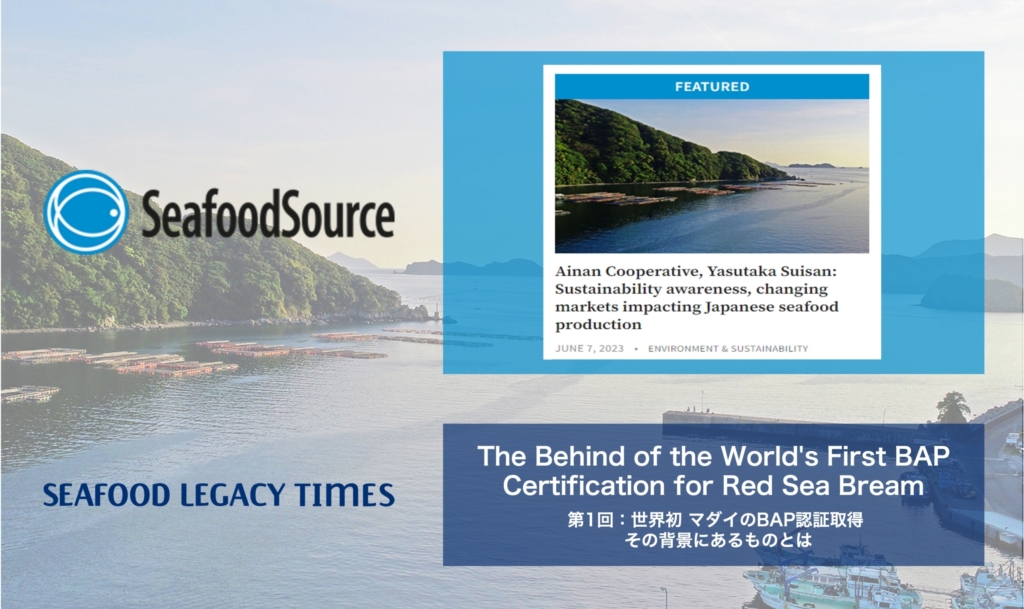

1_修正524-1024x606.png)


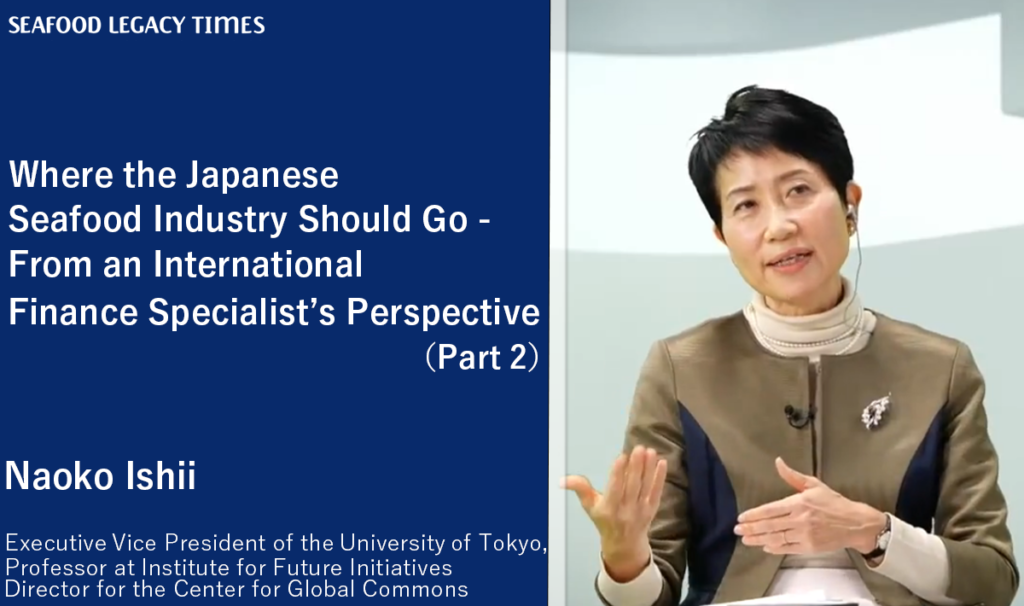







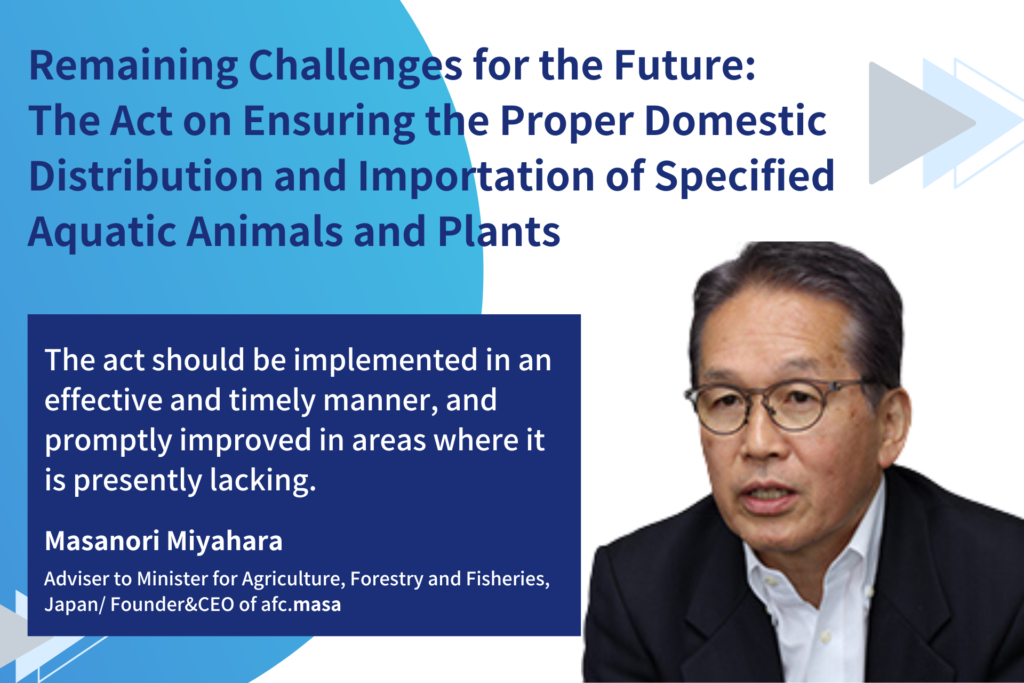
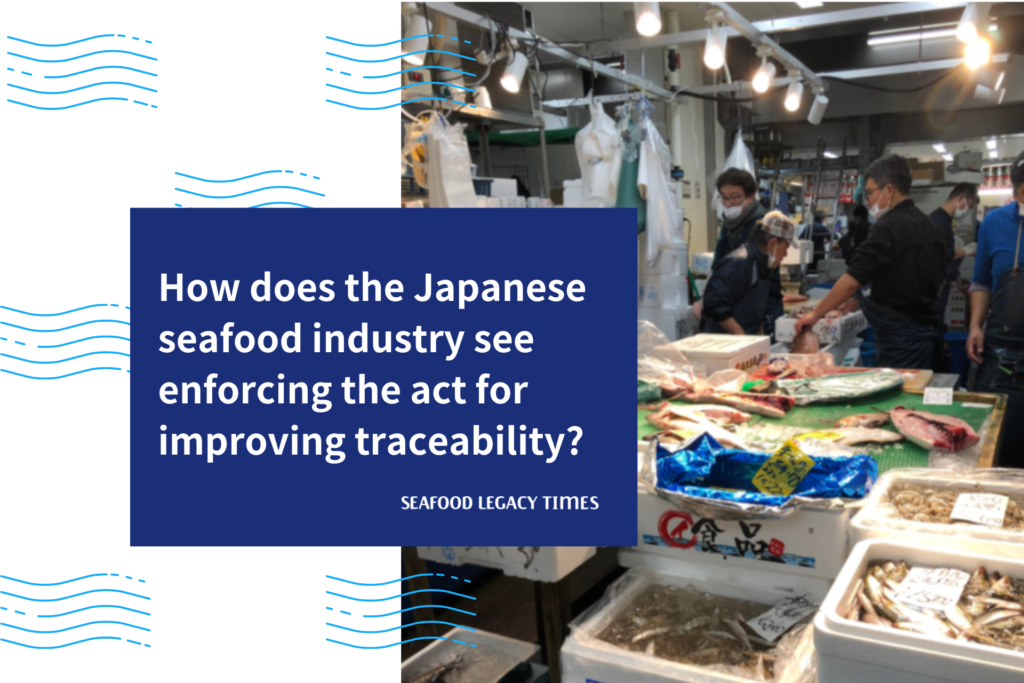



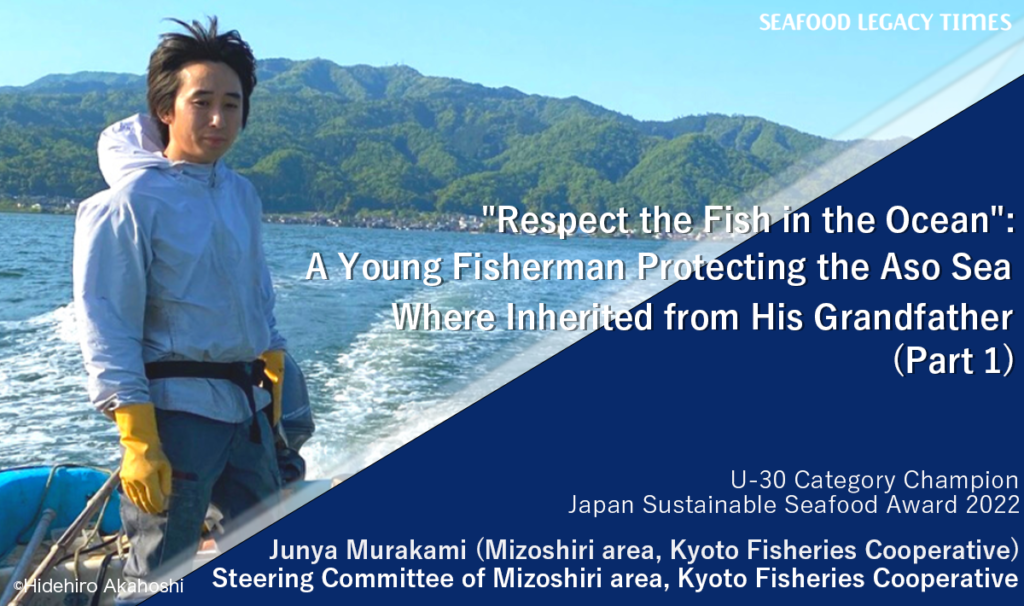
.2-1024x606.png)
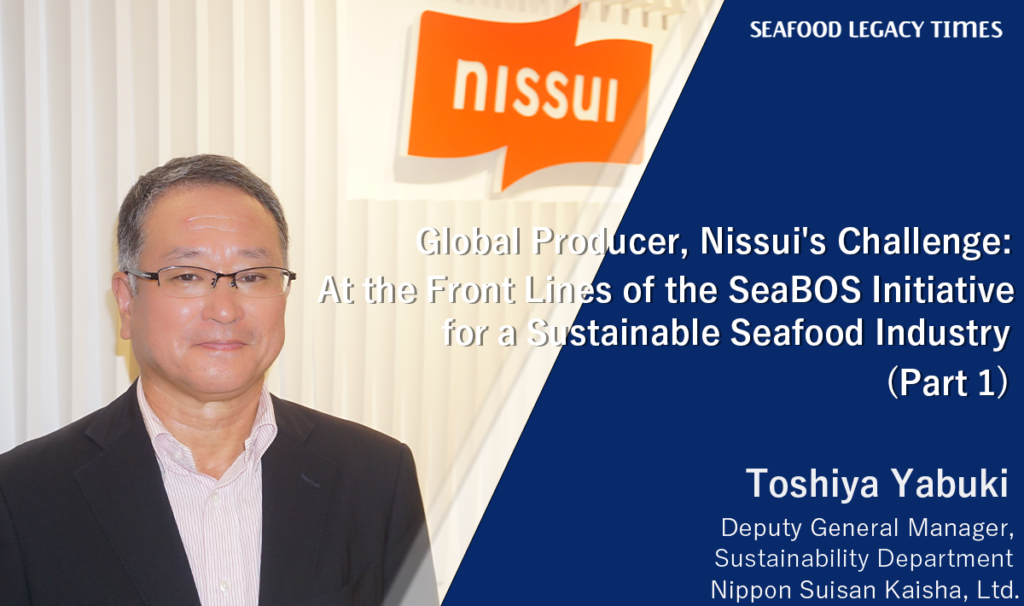
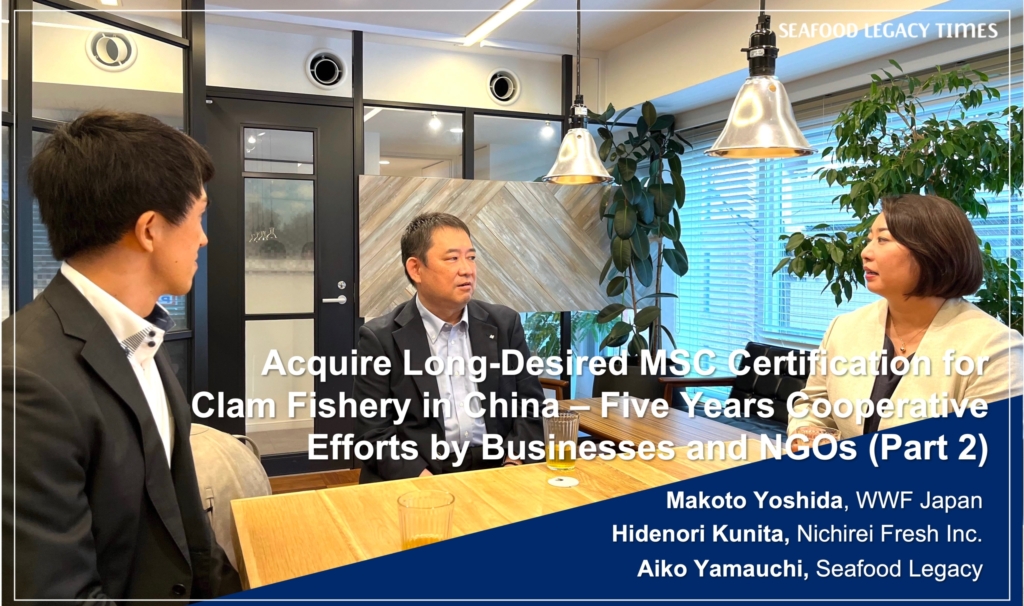
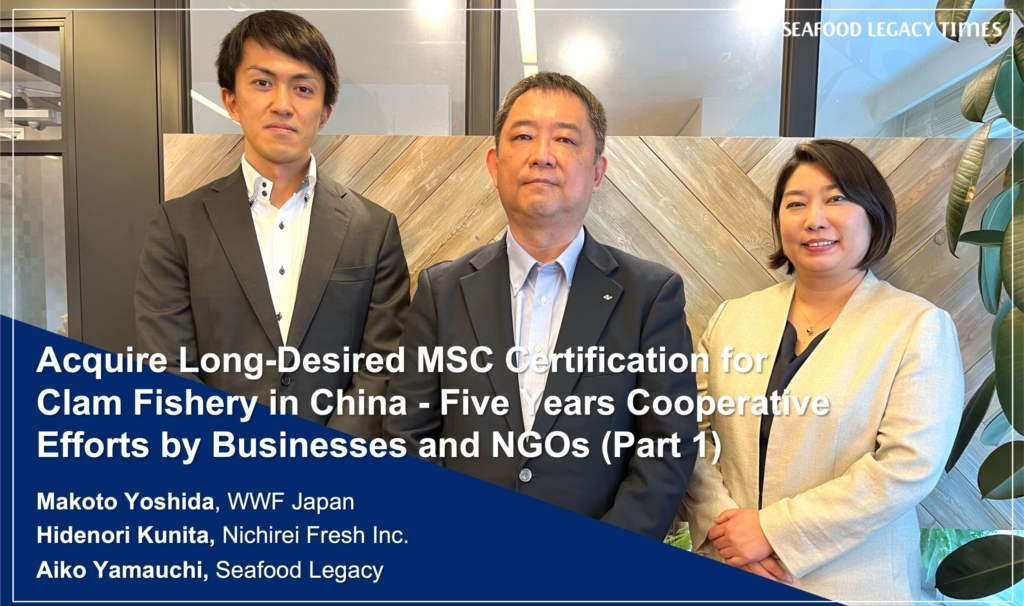






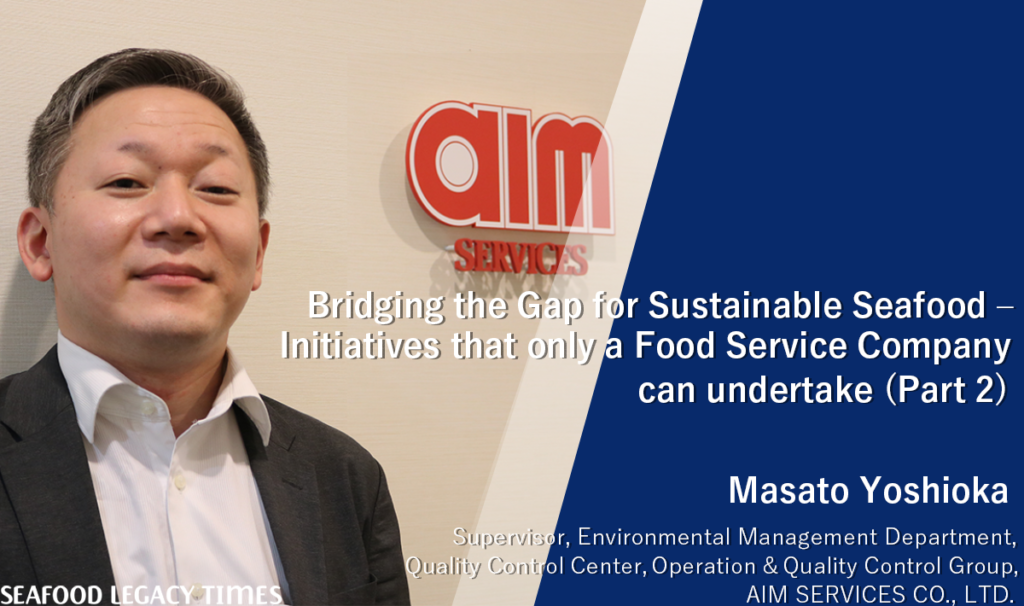
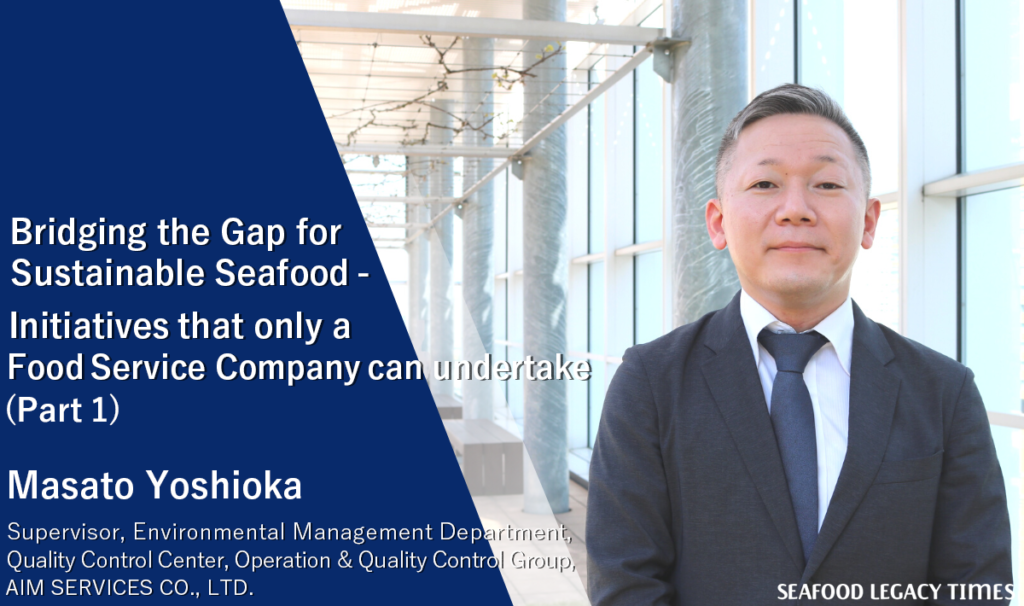
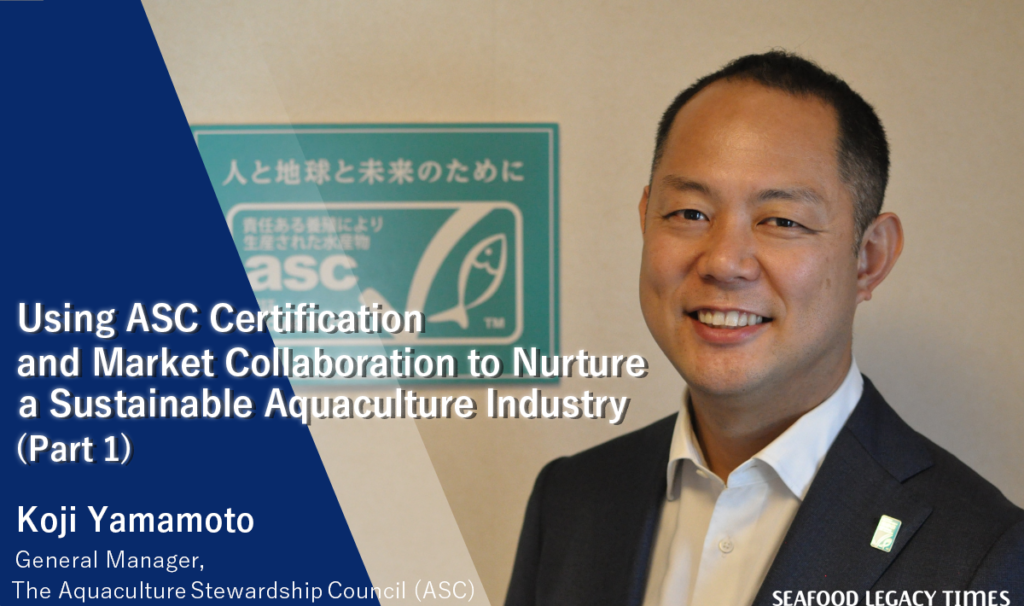
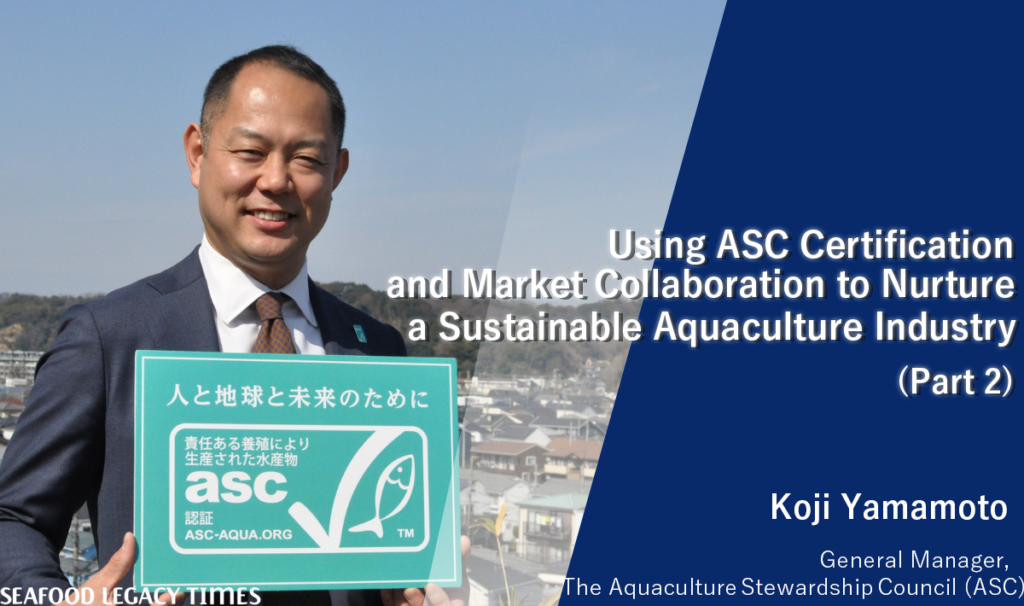
2-1024x606.png)
-1-1024x606.png)
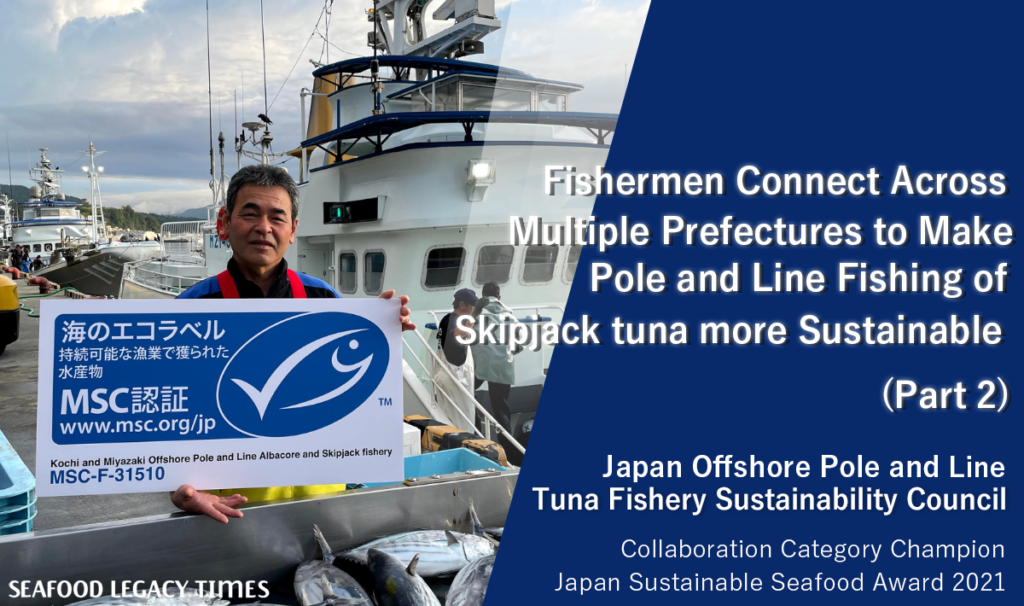
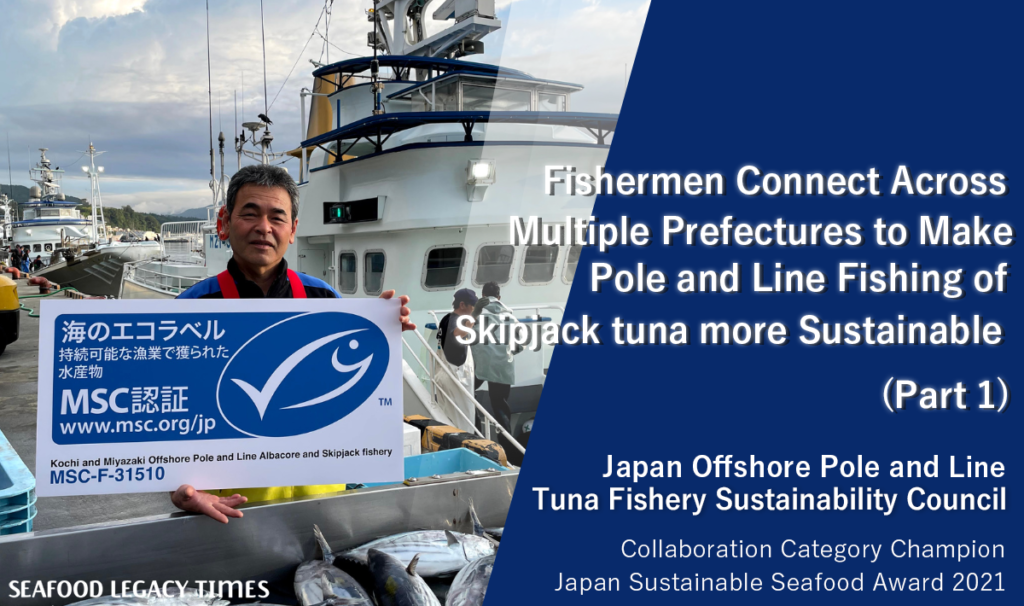
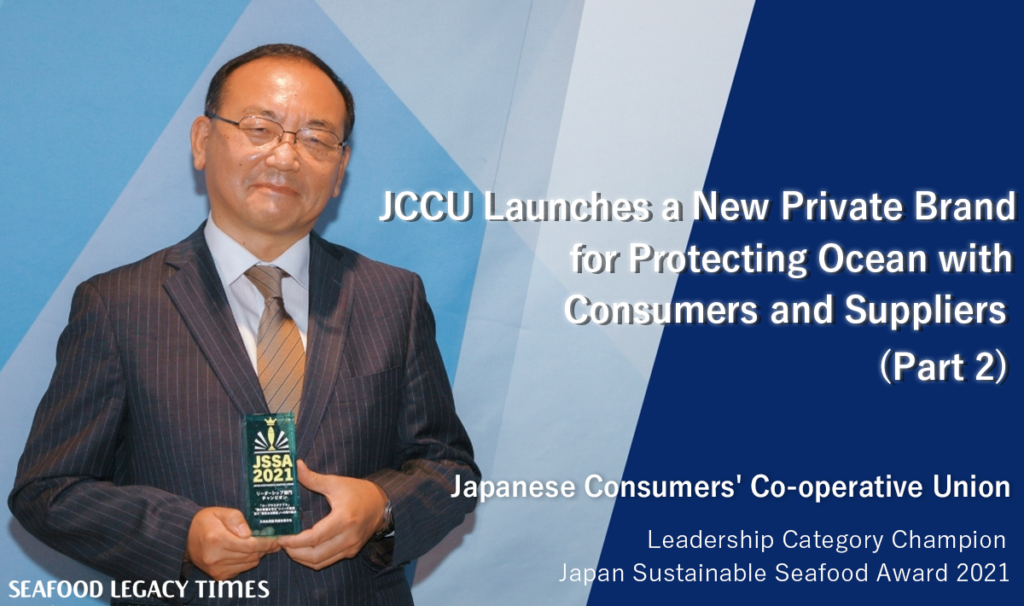
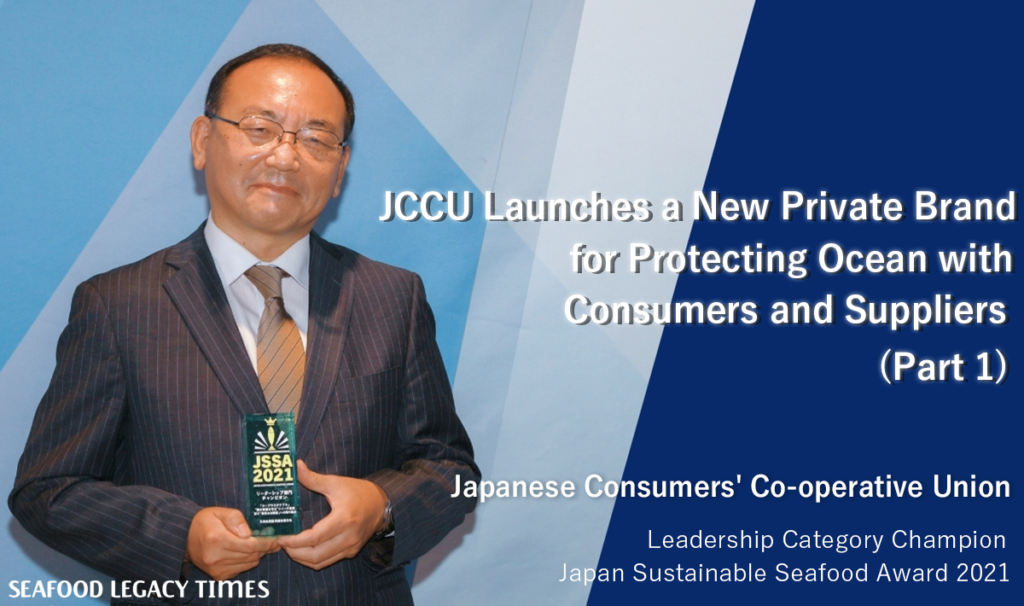
Part2-1024x606.png)
Part1-1024x606.png)
